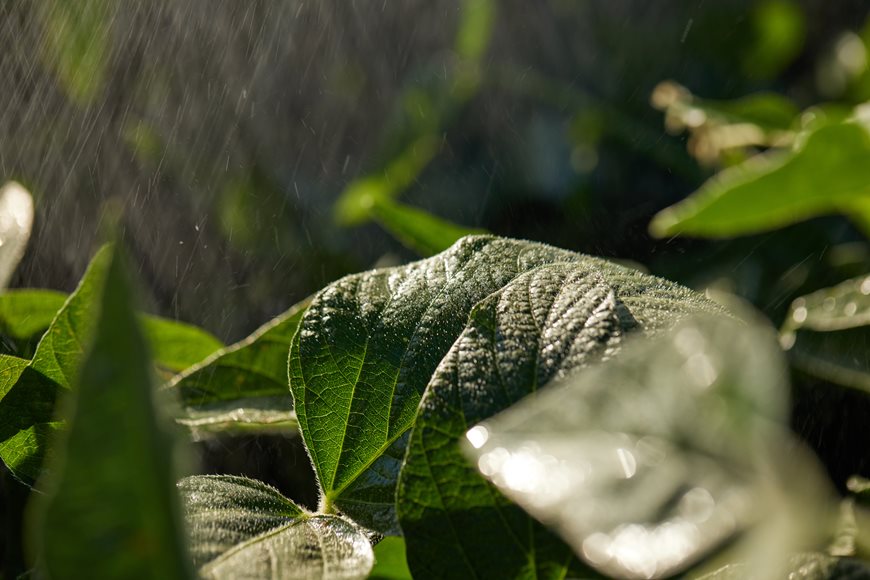5 Ways To Optimize Soybean Yield Potential
Tyler Steinkamp
Crop Protection Product Manager

When growing soybeans, there’s a balance you need to strike between pushing for optimal yield potential and ensuring profitability. From planting timing to in-season management practices, every decision can impact the final results. Here's our top five tips for maximizing soybean performance.
-
Plant Early
One of the most impactful things you can do is to start planting earlier. The majority of soybean yield comes from having more nodes, more beans on those nodes and larger beans. Planting earlier allows for a longer filling period during the growing season, increasing the likelihood of achieving those higher yields.
Data shows that planting soybeans just 14 days earlier can result in an average increase of 4.1 bushels per acre.1 Even at today’s prices, that could translate to a valuable $46 per acre gain.2 However, planting early also comes with risks, such as damaging frosts following planting. This is why it is important to weigh the benefits against the risks, considering insurance dates and the potential need to replant.
-
Be Strategic With Seed
When selecting seed, first consider your field’s agronomic conditions and challenges. Then, find soybean varieties equipped to handle those challenges, but don’t limit yourself. If you focus only on playing defense, you’ll miss the opportunities a strong offensive strategy could provide in a season with ideal conditions.
That’s where the strength of WinPak® soybean varieties comes in. Available only through CROPLAN® seed, each WinPak variety is a unique combination of two soybean varieties designed to address field variability and respond to the conditions of the season. In challenging conditions, you have a variety that covers your agronomic must-haves. In ideal years, you have a variety that can find another gear.
-
Master Weed Control
Once soybeans are planted, in-season practices become crucial. The first threat to address? Weed pressure.
Following weed control best practices and starting the season clean is non-negotiable for top-performing soybeans. I still see farmers often wait too long to make herbicide applications, which gives weeds too much time to establish and steal resources from the soybean plants, leading to reduced yields. The ideal time to apply them is before the need becomes apparent, because once you spot weeds, yield loss has already occurred.
For optimized applications, it's important to match the right nozzles and adjuvants with the right herbicide. Your local ag retail Agronomy expert is a great resource to make sure you have the right nozzles and tank-mix partners for every pass.
-
Implement Yield-Enhancing Products
Fending off yield-robbing threats is essential for protecting yield potential, but there are many options now that can help enhance performance. Early-planted soybeans tend to be more responsive to yield-enhancing products like micronutrients, plant growth regulators (PGRs) and fungicides.
- Fertility Management
While macronutrients are a foundational input that need to be addressed early, micronutrient deficiencies provide an opportunity for fine-tuning that can be managed in-season.
To effectively manage micronutrients, monitor nutrient levels by tissue sampling. This gives you a real-time snapshot of how a plant is utilizing nutrients so you can address deficiencies more accurately. If tissue sampling isn’t realistic for your schedule, work with your local retailer to monitor deficiency trends in your area. According to more than a decade of our tissue sample data, zinc, manganese and boron tend to be the most commonly deficient micronutrients in soybeans, so starting with those nutrients is also a good data-backed approach.
Soybeans are typically most responsive to micronutrient applications around R1-R3. This is when the plant begins to enter reproductive stages and determines yield.
- Fungicide Treatments
Fungicide applications at the right growth stages can help manage diseases effectively. Scout for key diseases like septoria brown spot, frogeye leaf spot, white mold and sudden death syndrome. In areas prone to specific diseases, multiple fungicide applications may be necessary. Earlier planting can also be more conducive to disease development because it typically leads to a thicker, denser canopy where moisture can accumulate more.
- Plant Growth Regulators (PGRs)
PGRs can also play a helpful role in regulating the growth and development of your crops. Especially with early-planted soybean crops, PGRs do a great job of branching and closing that canopy. When applying PGRs, I recommend two applications: one around R1 and the second around R3.
-
Experiment With Emerging Technologies
New technologies are always emerging that can help you target specific areas more efficiently, optimizing inputs and maximizing yields.
A trend we’ve noticed more growers implement lately is applying sulfur before soybean planting, which has proven successful in many scenarios. Sulfur plays a key role in root growth and nitrogen utilization and efficiency, and with comes the need for more sulfur.
The key here is that a lot of times you get nitrogen with sulfur, so ensuring that sulfur rate is low enough that you don't get over 25 pounds of nitrogen with it, because you can make the soybeans lazy and in turn get bad inoculation.
As always, it’s important to talk to your trusted advisor before making any decisions regarding new technologies or large changes to your operation. By staying informed about the latest agronomic practices and technologies, you can make more informed decisions to optimize your soybean yields.
1 WinField United. 2023 Answer Plot trial. 32 locations.
2 Based on the USDA 2024/25 U.S. season-average soybean price forecast of $11.20.
© 2024 WinField United.Important: Before use always read and follow label instructions. Crop performance is dependent on several factors many of which are beyond the control of WinField United, including without limitation, soil type, pest pressures, agronomic practices and weather conditions. Growers are encouraged to consider data from multiple locations, over multiple years and to be mindful of how such agronomic conditions could impact results. Answer Plot, CROPLAN, WinField and WinPak are trademarks of WinField United.
IF YOU LOVE OUR INSIGHT, YOU’LL LOVE OUR ROI POTENTIAL
Every successful harvest starts with a seed. It just can't end there. Choose which high-performing seed products you’ll start with this season.






